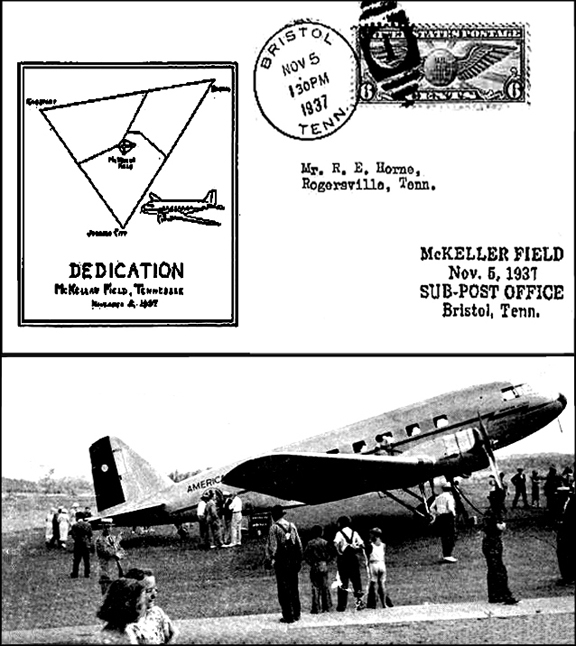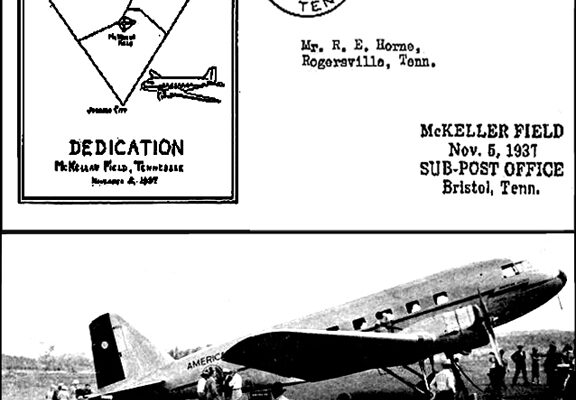In 1958, a Junior High School classmate and I went to Tri-Cities Airport to research for a project about the operation of the facility as part of an assignment for Ms. Viola Mathes’ 9thgrade Civics class. We put together a poster that was later displayed during a PTA meeting.
I was reminded of this event when I read the title of an article in the January 9, 1934 Johnson City Staff-News: “Engineers Busy Making Final Surveys of 125-Acre Airport.” The clipping stated that the dream of East Tennesseans had long been to possess an airport that adequately served the Tri-Cities area. That vision became a reality when engineers began surveying and moving in machinery to accelerate the building project on a chosen site located about halfway between Johnson City and Kingsport, just a short distance from a newly paved thoroughfare between the two cities.
The article stated that all but 10 acres of the desired land were in Washington County near the Sullivan County line. A committee chosen to purchase the property found all the landowners willing to sell their land at a reasonable price except for one family who held out for a higher price. Timing was favorable for the construction of a regional airport. As part of President Franklin D. Roosevelt’s New Deal, the CWA (Civil Works Administration) was approved on November 8, 1933 with a goal to create jobs for millions of unemployed workers. It was intended to run parallel with the CCC (Civilian Conservation Corps).
The CWA created construction jobs, aimed largely at improving or constructing buildings and bridges. However, CWA’s window of opportunity lasted only four and a half months, ending abruptly on March 31, 1934 after racking up a 200 million dollar monthly tab.
The newspaper article stated that engineers were making final surveys for the airport and workers would be selected equally from the four cooperating counties: Washington, Sullivan, Unicoi and Greene. This was in exchange for each party agreeing to pool its share of CWA funds to secure the airfield. A landing field was seen as a significant benefit for people residing across a wide area. The East Tennessee field was to be the largest in Tennessee with two runways 3,200 feet long and three others almost that length. One impressive fact about the new airport was that the largest planes built at that time would be able to land there regardless of the direction of the wind.
Mr. R.S. Boutelle, former Tennessee Director of Aeronautics who was in charge of 11 southern states in the building of airports with CWA money, telephoned officials and ordered work to get under way immediately. Local authorities, eager to comply with the director’s instruction, expedited every phase of the preliminary work.
The newspaper article further noted that after the airfield was completed, it would represent an expenditure of more than $200,000. It was believed that a sufficient amount of money from the CWA fund would be available for building necessary hangers, beacons along the runways and other lighting facilities.

The article concluded by bragging on Johnson City’s and Kingsport’s leaders for their cooperative efforts in securing the airport. Those from JC were Harry D. Gump, M.T. McArthur and J.W. Cummins. A.D. Brockman, Robert E. Peters, J. Fred Johnson and E.W. Palmer represented KP. Efforts from those humble beginnings in 1934 to establish local air travel can be seen today by visiting the modern and expansive Tri-Cities Regional Airport.
Does anyone recall the name or have a photo of the friendly little canine that for years hung around the runway side of the terminal and became a hit with passengers?

Comments are closed.